Titled ‘Universal Heavy-lift UAV Carriage System’, a pre-procurement notice published by the Ministry of Defence outlines plans to procure a platform-agnostic system.
The system will have a carriage capacity of 150-200kg.
According to the notice:
“We desire a universal carriage system for Heavy-lift UAVs that is platform agnostic. We aim to: Draw on the knowledge and experience of industry to develop and optimize such a system; Inform its emerging doctrinal applications; and better understand the balance of both systemic and situational risk factors associated with its use. To date, experimentation and development of UAV carriage-of-equipment has largely been focused on individual UAV platforms and the attachment of various items direct to the platform. However, this has generally required the UAV to land; has proven to be relatively slow in reconfiguration; and has required various additional safety restrictions to ensure personnel interacting with the system are at ALARP risk.
Direct attachment of unproven loads may also compromise the in-flight stability/agility of the UAV. Initial requirements for the desired universal carriage system: – Optimised for combined carriage capacity of 150-200kg. – Easily configured to carry a selection of Logistic, Equipment Support and Medical items (e.g. water, ammunition, food, batteries, fuel, medical supplies etc.) and usable in multiple domains (primarily Land and Littoral) for the sub-unit resupply and recovery of these items. – Capable of rapid reconfiguration to evacuate casualties in emergency circumstances, while mitigating as many risks to those individuals as possible.
To note, while the system is not intended for use as a casualty extraction method, there is an expectation that ground forces may want to use it for this purpose in extremis. – Fast and safe interaction with the UAV – The carriage system must be easily attachable and detachable by ground personnel for the swift delivery or recovery of different payloads. This should also enable the interchange of multiple carriage systems if located at different points in the battlespace.
The attachment point must be robust to mitigate the risk of unintended detachment, ideally with a secondary lock as an additional safety measure. The system should be attachable and detachable both when the UAV hovers above or if it is on the ground. It is intended that the Authority will hold a supplier day in the near future.”


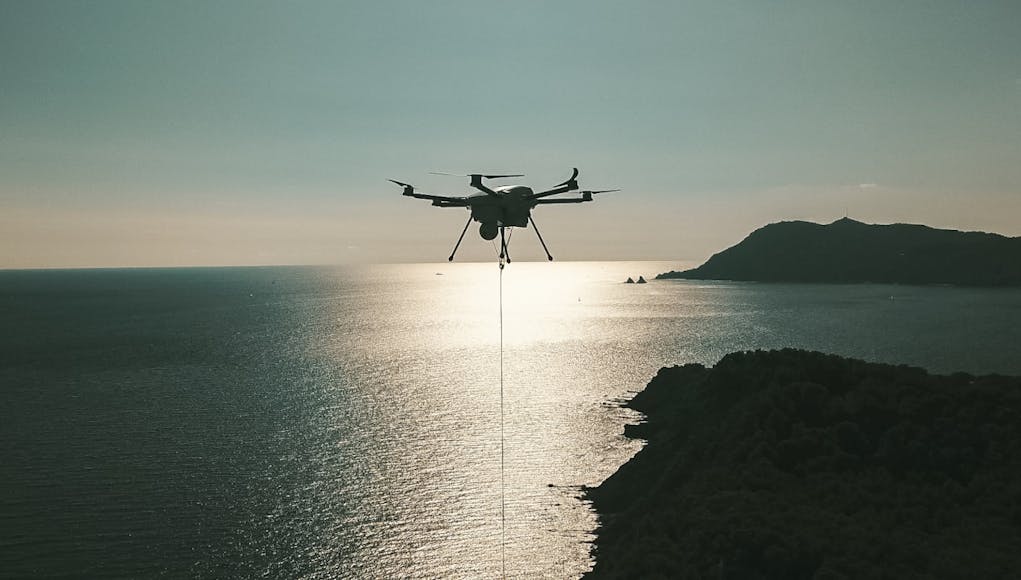
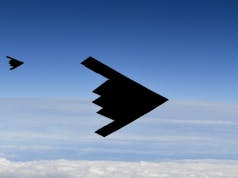
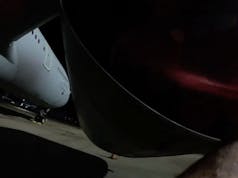

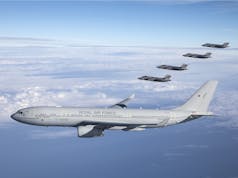

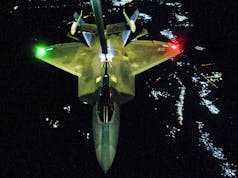

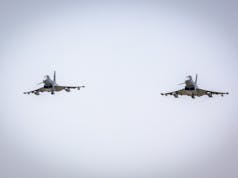

Not sure I’d like to be locked in a box dangling beneath a drone under ordinary circumstances but I’m sure if my life were on the line my opinions might change. I wonder how often they think they:d have to use this?
I’d much prefer to be airlifted by the Bell “Huey” UH-1, their rotors made a great sound and the music wasn’t bad either.
Well, in Korea we tried airlifting casualties using “stretcher panniers” attached to the sides of Dragonfly helicopters. The little Heli could hardly lift two extra people and the soldiers hated being carried, wounded, in what was basically a metal coffin with no outside contact.
That’s what I’m worried about with this idea.
Indeed. I’m guessing on the type of injury and where the causality is located. In a heavily contested environment, a helicopter might be at greater risk.
Yes but as above, I’d only do that to myself if my life was genuinely at risk. That sort of thing on a battlefield would be long-term traumatising.
Just to clarify, I wasn’t personally in Kores
Yup, there was a “casevac” drone that was shown over on twitter the other week. I upset a lot of techbros by pointing out that it was extremely dangerous to the casualty and couldn’t be used to evacuate anyone in critical condition (since they couldn’t be monitored) and if the casualty was conscious enough to be loaded, probably was a low enough priority to wait for ground evac.
Drone cas-evac is one of those things that sounds amazing to anyone who hasn’t been a clinician involved in moving casualties, and sounds utterly crazy to anyone who has.
It’s a bad idea…if you have an unstable trauma patient the very last thing you do is leave them alone…ABC need constant review and expert intervention or your casualty becomes a corpse very quickly….trauma patient losses consciousness..airway lost dead, trauma patient vomits ( and they do that a lot) airway lost dead, dressing shifts or is unable to manage bleed, trauma patient goes into hypovolemic shock dead, develops tension pneumothorax dead….there are just so many ways that unstable casualty could die that could be managed if their was skilled help….a set of hands is a fundamental part of making sure a casualty does not die.
Having watched the series on casualty evacuation in Snowdonia et al I can in fact see some logic in this. More than once helicopters cannot or it would be exceptionally dangerous to access the exact location of the patient. It might however be able to land or hover a few hundred metres away in a safer location. In those Circumstances it would make perfect sense to use such a drone to carry the patient rather than hope weather conditions might change or struggle with a stretchered patient across bad, often steep terrain bad in its own right but the time concerned could be crucial to a patients health. Plus those doing so may be required to defend the position while it happens. Yes it won’t be a very common occurrence, indeed likely very rare but the option is one well worth having and could save lives. After all hanging from a line from a helicopter operating at its extremes accompanied only by someone helping you reach that copter not able to be of any actual medical help in that period even if he/she had the knowledge is pretty traumatic.
Ok so It’s a Medi Vac Drone then……. Is there a particular University that teaches this style of long winded Waffle to describe stuff like this ? 🙄
More likely casevac than medevac at those weights.
Weight has nothing to do with the difference between Medevac and Casevac.
Casevac doctrinally is the evacuation of a casualty on any platform that isn’t specifically designed to evacuate a casualty.
Medevac is the evacuation of a casualty on a specifically designed medical platform.
Tying a stretcher onto the back of the CQ’s Landrover and traveling 150miles is a Casevac, putting the stretcher on the back of a Battlefield Ambulance and driving 20miles is a Medvac.
Medevac will typically have enough medical gear and space for a couple of people to administer it. Why would you design a medevac platform without that? These drones don’t have that capacity. Hence the comment saying payload indicates it’s not purpose-designed: casevac.
I mean the fact that it says “In Emergency only” anyway makes it clear that its (a very poorly thought out) casevac. I’m just point out that weight is not an indicator of whether it’s a casevac or medivac platform.
All part of being “right on” now. Without waffle what really have we got? Waffle allows the windbags to feel important, when in fact they contribute nowt but hot air.
That is what comes of lack of educational rigour. It is useless, a waste of people’s time & attention. Teachers should be cracking down on it, not encouraging, teaching or coaching it. The only good waffle is that which can be covered with syrup & eaten.
Say what you mean, mean what you say, keep it as clear & concise as you can & get to the point!
To be fair, that’s not what they’re asking for. They’re asking for some kind of basket/carrying system that can be attached to a heavyweight drone.
Sticking a person with any form of life threatening injury on their own without anyone with them is a pretty bad idea all round to be honest. That’s why you always have a paramedic in the back of an ambulance….I can see it’s use for moving stuff around but a casualty…no you need skilled people with the correct equipment to do that…sorry but you cannot replace manned rotor for that function
But maybe an idea to get a casualty out of a hot LZ where the RAF don’t want to risk the MERT bird? Drop the casualty back at the FOB or wherever, its an option I suppose. But as you said, if the casualty is bad enough to be casevac, then they will need medical attention for any distance move.
That’s the problem, they are either stable and so can wait until it’s safe to transport or they are unstable and need someone with them..or are catastrophic and will die whatever you do..in the first case your best just waiting till it’s safe, in the second case you need to be on top of them and in the final case throwing them on a drone to die alone is just pointless and an bit cruel.
I’ve seen and managed a lot of people with life threatening and catastrophic injuries…not sure I would ever stick any of them on a drone…I could see a number of casualties that could have been saved losing an airway mid flight ( lots of reasons to loss an airway in a flash with trauma cases) or bleeding out ( you can’t replace the human hand managing some bleeds until you can sort it out properly ) before they decide it’s a bad idea and kills more than it saves….trouble with these ideas is it’s impossible to test the efficacy unless you try it in a hot war with casualties….
Agreed, your post points out the medical realities mate, cheers.
So I’m going to point something out which I pointed out on twitter: Unresponsive casualties can not maintain their own airways. We either have someone physically maintaining their airways for them, or we insert a mechanical adjunct to protect their airway and keep it open (in laymans terms we put a tube down peoples throats to stop them chocking to death on their own tongue).
No problem right? We put a tube down the persons throat and then we put them on the UAV and…. what happens when they wake up? Which happens. Most people have a gag reflex (Royal Marines and Para Mortar Platoons not withstanding), and when they regain some level of consciousness if they have a tube in their throat they tend to vomit… then breathe in the vomit, and then die.
Never mind what happens if they move and knock a tourniquet loose, or dislodge a line, throw a clot…
This, as Airborne has said could realistically only be used for conscious patients, and if they are conscious, then we’d want to be looking at moving them in a safer, less time critical way.
I call it a “tech bro” solution, in that it was made by someone who doesn’t understand the problem they are solving, but just look at it with the tech they’ve made and think they understand the problem (also when you point out why it won’t work they tend to get very angry).
It will if it’s taken forward kill a few people before they realise what a stupid idea it is…now if you have a drone that can carry a paramedic/nurse/dr..give full access to the casualty and carry all the equipment to manage ABC then…ok but well then what you have is an air ambulance…..light rotor….I always enjoyed getting out on the air ambulance…
I suspect we have similar backgrounds since we’ve got virtually identical objections. Sadly the only time I’ve actually gotten to do Air Ambulance work was on training scenarios though.
Here we are again… another pathetic hair brained wheeze dreamt up by someone or someone’s, to ponce another useless contract from the MOD.
A drone… to carry battlefield casualties??? FF sake!
Points to note from the article.
“Capable of rapid reconfiguration to evacuate casualties in emergency circumstances”
“To note, while the system is not intended for use as a casualty extraction method, there is an expectation that ground forces may want to use it for this purpose in extremis.”
Beyond that, what Jonathan, as an expert in the field, says above is enough for me.
Doubt BAE would have acquired Malloy recently if there were no significant benefits foreseen.
The problem is, and I agree fully with Jonathan here, what is an “emergency circumstance”?
If it’s big enough to transport a person it’s hardly going to be any more stealthy than a helicopter, if a casualty is well enough to put alone on a drone then you can delay transport.
I agree with him too, mate. I was emphasising those passages to Tom who’s post thinks these are actually bought for that task, when the bold text clearly explains it as a last resort in extremis and not likely or desirable.
The clickbait headline doesn’t help either.
The thing is I can’t really imagine an emergency circumstance where you’d want to do it. Putting someone in a drone is a reduction in care, so that even the most basically trained soldier would be preferential.
And if you can’t risk a chopper with a medic on board then the threat to airborne assets will be just as big to a drone that can carry a casualty. Drones are currently great because they’re small enough to be hard to notice, and cheap enough to be expendable. If it’s big enough to carry a patient it’ll be noticeable, and if it’s carrying a patient it won’t be expendable.
Thanks. I’m curious who in the MoD, Army, made even a reference to such a possibility in the notice.
I was talking about it in work today. Apparently it (or a similar project) was a Navy idea to move casualties from ship to ship, but was binned when the necessity for teaching CMT’s to sedate patients was required.
I’ve lobbed casualties on the back of a quad trailer in the past, not an ambulance but good enough as a quick way of getting one of the lads out of the immediate shit zone! Seems a common sense opportunity to maximise all available options and assets mate.
But if you whack the casualty on the back of the quad trailer, at a minimum you, the quad driver, are there with your BCDT (preferably Team Medic) training to assist if something goes wrong.
Agreed, the concept with the drone is good on paper, practical implementation when SMEs have a look, not so mate.
But you have someone with the casualty….it’s no different really from humping along with a scoop stretcher or canvas and poles ( although you’re not allowed to use them anymore….health and safety)…the whole drone idea is different as it completely isolates the casualty…sometimes casevac, extraction, whatever your service of choice calls it has to be a bit Heath Robinson…but rule one, two and three four and five…alway have your eyes on the casualty and always be ready to intervene…( I’ve had people loss airways in all sorts of places…and as long as you are there you can generally keep that airway patent….although not always).
Totally agree, anything that could help in the extraction of a battlefield casualty has got to be a bonus.
I still believe emergency casualty evacuation with a ‘drone’, is a non starter. Would such things need to be identifiable by being covered with Red Crosses?
If not, they could as likely be shot down by an rpg easily enough.
As you said there AB… a quad bike would be far far easier.
If it’s covered in red crosses it’s no longer emergency evacuation, it’s a dedicated medivac platform. The rules on Red Crosses are incredibly strict and it’s why RAF Chinooks didn’t carry red crosses in Afghan despite having MERT teams on board. Once you put a red cross on a platform that’s it, you can only use that platform for medical purposes.
A drone hovering in the air, with a wounded soldier…
Easy target for a missile!
This does not look like a good idea🙄even in extreme emergency
Save the drones for resupply, Reconnaissance and attack
Taking bets on that this will be abandoned, like the jet pack.
Jet pack not totally abandoned mate, some blokes qualified on it, just needs a lot more work to be used in an operational tasking.
Although the discussion has centred around the desirability, or not, of medical evacuation, I discern that the major thrust of the article is the ability to sling random loads beneath the uav.?
Having hard points and so on, and space under the thing to hook up…oooh…tins of beans and sausages for ship use, green make up for the army and so on. I.e non standard or non-palletised loads.
From there, as has been discussed, it then seems feasible to sling a person underneath, for those uneducated in such things.
If the uav had its own pannier system, then the reasoning goes it might just be man-sized…..
AA
Watching all the videos coming out of Ukraine, casevac looks like it has become super dangerous. So many of the videos are of FPV hits are during casualty evacuation when people are clumped together and slowed down carrying a casualties. Vehicles can be spotted far in advance by drones and then targeted. To evacuate front line casualties you need something that is mass producible, very fast, and isn’t manned. Helicopters and their crews are too irreplaceable for that sort of mission, especially considering how many casualties that are being suffered on the modern battlefield. Drone evac is far from ideal, but it’s now arguably far too dangerous for evacuation crews.